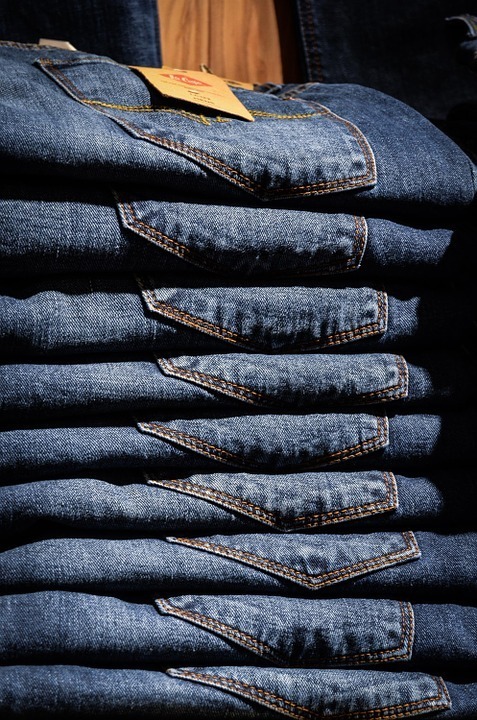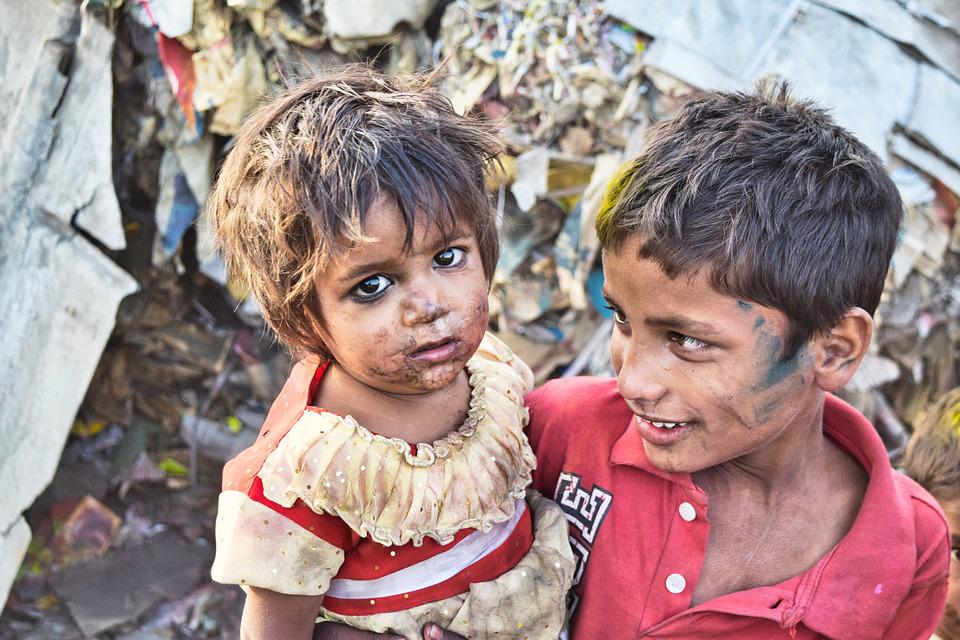The garment market has become quite popular all over the world and emerged as a major industry. The global apparel manufacturing market and fashion industry have a value of over $3 trillion. However, this industry is dominated by countries that are developing and not yet developed. This means that countries like the USA and UK are far behind in this multi-billion dollar market while countries like India and China are ahead. Let’s take a look at the Garment Industry of India and how it is growing to become one of the top garment manufacturers and exporters in the world.
Overview of Garment Industry in India
India is a developing economy with a GDP of $3.17 trillion as of 2021 [4]. As of 2021, the country has a textile and apparel market worth $80 billion [2]. By 2022, this figure reached $87.6 billion and is expected to grow at 5.1% per annum between 2021 – 2026 [1]. Indian producers enjoy the benefit of the high availability of unskilled workforce to be utilized in factories as well as ample availability of farmland which helps in keeping the cost of production low. India accounts for 7% of the global garment manufacturing market [1]. This is quite a high share of the $3 trillion market.
India is also the second largest exporter of textile and clothing, right after China, and is expected to grow further in the coming years. By 2026, the market value of the garment industry in India is forecasted to cross $190 billion which is going to be a 140% increase from the value in 2021 [2]. Some of the top textile manufacturing companies in India include Arvind Ltd., Bombay Dyeing and Manufacturing Company Ltd, Fabindia Overseas Pvt. Ltd., Welspun Ltd., and Raymond Ltd as well [3].
Garment Industry of India | Detailed Analysis
The garment industry in India contributes 2% to the GDP of India with the employment of more than 50 million people [17]. The garment manufacturing and sales can be further categorized into women’s garments, men’s garments, and children’s garments.
Women’s Garments Industry in India
The women’s garments industry in India is considered the sixth largest women’s apparel market in the world as of 2020 [5]. By 2025, the women’s garment market in India is forecasted to become the biggest sector which will account for $39.51 billion [1]. Earlier, the men’s garment market was the biggest subsector of the garment industry in India. The share of women’s apparel in India’s market is 34% [5]. The overall growth rate of the women’s garment market in India is 11% [9].
The women’s garment industry is focused on traditional clothing as well as western wear. The traditional clothing includes the saree and shalwar kameez which are worn by women all across India. Such clothing has been in the country’s culture for the past many years. However, one report suggests that there has been a reduced demand for sarees in western culture. The CAGR for sarees is just 3% per annum between 2016 – 2026 while the denim and activewear segment has a CAGR of 14% per annum for the same period [7].
Recently, due to an increase in the level of education throughout the country as well as an increase in the number of working women across India, the western culture has also become significant. This is one reason why women’s shirts, jeans, crop tops, skirts, and other forms of western clothing have become quite popular all across India. Global companies such as ZARA, Westside, Gucci, and others have created a social impact with a demand driven by western wear [5].
Future of Women’s Garment Market in India
Future prospects of the women’s garment market in India are very bright. According to one report, there are several reasons why the market for women’s apparel and garments is aggressively growing as compared to other markets [6]. A survey by ProdegeMR reports that there has been an increase in festivals and special occasions over the last few years which has increased the demand for ethnic wear. India is becoming a home to many other cultures, and religions as well which is why the demand for different types of women’s wear is expected to increase even further [6].
In addition to that, online shopping is rapidly developing in India. With convenience in terms of Cash on Delivery services as well as increased reliance on e-commerce models, businesses are able to target their customers in a better manner. Social media influences are highly impactful on women buyers which is also a major reason why this particular sector is going to perform much better than others [6]. Western wear is expected to grow much more compared to traditional clothing.
One study suggests that women’s ethnic wear in India had a market value of $17 billion in 2020 which is expected to increase to $24 billion by 2025 [8].
Men’s Garments Industry in India
Menswear is also one of the most important sectors of the garment industry in India. Up until 2021, the men’s garment market was the largest subsector of the garment industry when it accounted for 43% of the market [10]. However, by 2022, it was dominated by women’s garments and expected to stay in the second position. By 2028, the men’s garment market in India is expected to reach $35 billion [11].
Trousers, denim, shirts, and formal clothing are the key products in the case of the men’s garment market in India. They account for the most sales. With the arrival of many international brands in the country including Gucci, Hugo Boss, Donna Karan, Calvin Klein, Armani, Versace, and others, there has been an accelerated demand for western-style garments in the men’s market as inspired by various famous fashion designers[10]. It has also been highlighted that men are also adapting to the change of westernization and moving away from ethnic wear. The men’s garment market in India is around 9% which shows that the men’s market is growing at a rapid pace [10].
Children’s Garments Industry in India
India is a country with one of the highest population and birth rates. The country has 17.163 births per 1000 people [12]. As reported by the World Bank, the country has had a falling birth rate over the past few years and dropping to 2 from 2.2 [12]. Although the birth rate has reduced, there were over 24 million babies born in India in 2021, one of the highest ones around the world [13]. The children’s garment industry is highly correlated to the birth rate as well as an increase in the population of the country.
As of 2020, children ‘s wear accounted for $20 billion in India of which, $5.1 billion is coming from sales of school uniforms [14]. The children’s garment industry takes up 20% of the total market share of the garment industry in India. Studies highlight that this is one of the most growing sectors of the country because there is a change from need-based clothing to aspiration-based clothing. People are more focused on what looks good rather than what just fulfills the minimum satisfaction line. As a result of this, there is a focus on getting high-quality clothes for the children as well.
The children’s garment market of India is focused on western wear instead of traditional clothing. Baby products such as Rompers have high sales value. For young kids, t-shirts and denim jeans are a popular combination. With increased investment in India’s education sector as well as awareness regarding education, more children now go to schools. Therefore, the market for school uniforms is also high.
However, the majority of newborns in India are born to households living under high inflationary pressure. For this reason, the children’s garment industry in India is quite uncertain as well. Many people are not able to afford high-end clothes for their children. According to one report, 99% of the garment market in India is dependent upon non-luxury goods [1].
Garment Exports of India | A Major Sector
The export market of India’s garments ranks among the top 10 garment manufacturing and exporting countries of the world. As of 2021, the share of textile and apparel in the total exports of India was 11.4% [17]. The country had a textile export value of $41 billion and accounts for a 4% share of the global trade in textiles [17]. The country is ranked in 6th position in terms of exporting textiles and apparel globally [17].
By the next 5 years, the export value of Indian garments and textiles is expected to cross the $100 billion mark at a CAGR of 11% per annum [17]. India exports a variety of textile items such as raw cotton, woven cloth, handcrafted clothes, woolen products, and even silk to many other countries. To facilitate exports and better competition in the international market, 7 new mega textile parks have been created to facilitate the garment industry.
In addition to that, the Production-Linked Incentive Scheme has also been introduced by Prime Minister, Narendra Modi, which allows the successful applicants to have withdrawn the import duty on cotton completely. In return, the minimum turnover required to gain this incentive is at least INR 200 Crore or $25.15 million on a base investment of $12.07 million or INR 100 Crore [17].
Challenges for Garment Industry of India
There are various challenges in the garment industry of India. Foremostly, there is a mass presence of child labor in different types of textile mills. For this reason, India faces a bad reputation for its garment industry. Although there are no official records on the exact number of child laborers as it is kept a secret by the officials, estimates suggest that over 20 million children in India are involved in forced labor.
As of official records of 2011, there were 8.2 million children involved in child labor with the majority of them in the garment industry. [19]. One report suggested that these kids are beaten, tormented, and forced to work [18]. The payment of 5 kids is equal to one unskilled laborer’s daily wage [18]. As a result of this, many international companies have withdrawn their contracts from Indian garment manufacturers.
The industry is massively unorganized. There are no proper factories with facilities for the workers. Rather, there is a very miserable condition for those that are working. Shifts are sometimes as long as 14 hours and in many parts of India, various home-based factories are working for the garment sector [20]. Usually, socially discriminated and low socio-economic circle citizens are engaged in this sector. Mass piles of dirt and an absurd working environment are in India’s garment market.
In addition to that, the garment industry is also facing tough times due to high inflation in India. The Indian Rupee went to an all-time low in July 2022 when it got to 80 rupees for 1 USD. This creates a trickle-down effect on the entire industry which is going to face various problems in terms of price hikes.
Reduced check and balance by the governments and regulatory bodies is also a major issue in the garment industry in India.
There are certain trade challenges for the Indian garment industry as well. Exports have experienced a slight fall in recent years because China is emerging as the cost leader in the garment industry. China’s exports of garments amounted to $315.5 billion in 2021 [15]. It is expected to grow even further as China is focusing on increasing the garment production capacity as well as gaining contracts from many countries because of the low-cost production. Additionally, it is focused on sustainability which is helping the country in winning more contracts.
Besides, Bangladesh and Vietnam are emerging as the leading garment export countries in the world. Vietnam is also focusing on low-cost production in the garment market. Bangladesh won a duty-free agreement from the European Union which will provide the country with an added advantage for the trade of garments [16]. However, manufacturers in the garment industry are focusing on exporting garments to countries with less competition such as Hong Kong, Japan, and South Africa [16].
Conclusion
The garment industry in India is the second largest industry in the country. There are various uncertainties in the industry which is why predicting the future seems a bit difficult. However, with the ongoing statistics, we can conclude that there are some chances that the industry will grow even further. Problems such as child labor and the organization of the industry require attention from the Government of India.




